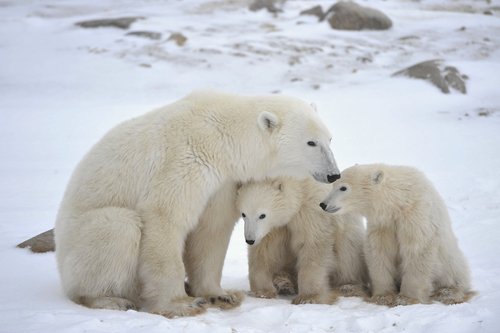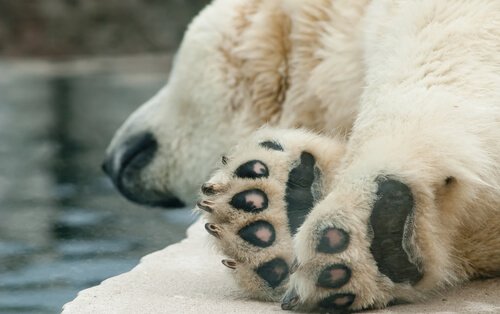The secret contamination of polar bears
There is no doubt that climate change affects, to a large extent, the lives of many animals. But in the case of the polar bear, there are a number of threats that add to this phenomenon. Today we tell you all about the secret contamination of polar bears.
The polar bear, the king of the Arctic
It is an unmistakable animal. The polar bear ( Ursus maritimus ) is considered one of the largest carnivores that inhabit our planet. Its physiognomy is slightly different from that of its other relatives, in which highlights very developed legs.
To reduce the loss of body heat and trap as much sunlight as possible, have a thick layer of subcutaneous fat and black skin that helps attract radiation. Its coat is not white, but translucent.
It feeds on several species of seals, although sometimes it can consume other types of prey. Therefore, the polar bear is considered the Arctic super predator : it is at the top of the food chain and has no natural predators. However, and despite its imposing appearance, this animal is seriously threatened.

The secret pollution of polar bears
Climate change is causing the polar bear habitat to be increasingly smaller and smaller . This is coupled with nutritional stress, diseases or indiscriminate hunting by man.
But there is another additional and equally dangerous factor: the secret contamination of polar bears. This is the conclusion reached by a series of experts from several countries. Environmental halogenated pollutants and plastics are endangering the survival of these animals.
Since they were detected in the 70s, halogenated pollutants - especially biphenyl polychlorinated or PCB- have been threatening the polar bear. It is known that these pollutants affect the reproductive and endocrine system of these animals.
Likewise, when analyzing tissue samples from Greenland samples more than 50 contaminants were discovered and pesticides , many of them currently banned. The long-term consequences for the health of polar bears are obviously hopeless.

Monitoring the health of the polar bears
To try to alleviate this situation, several organisms and research centers are carrying out Initiatives to end the polar contamination of polar bears.
In particular, an international team of experts has developed and published a guide that allows to 'monitor' the state of health and conservation of the polar bear. It contains some guidelines that can be decisive for the conservation of polar bears in the Arctic zone.
Researchers warn that these threats are not evaluated at 100% and, therefore, we do not know with certainty how they will end up affecting in the long term in the conservation of majestic animals.


